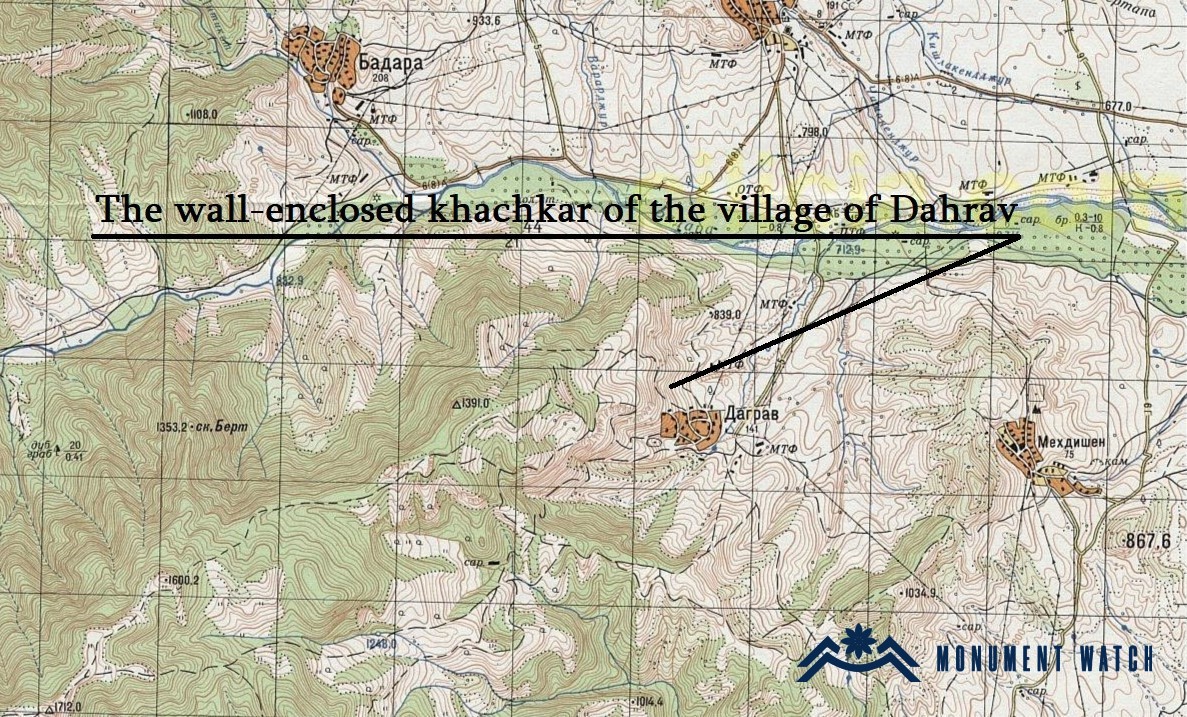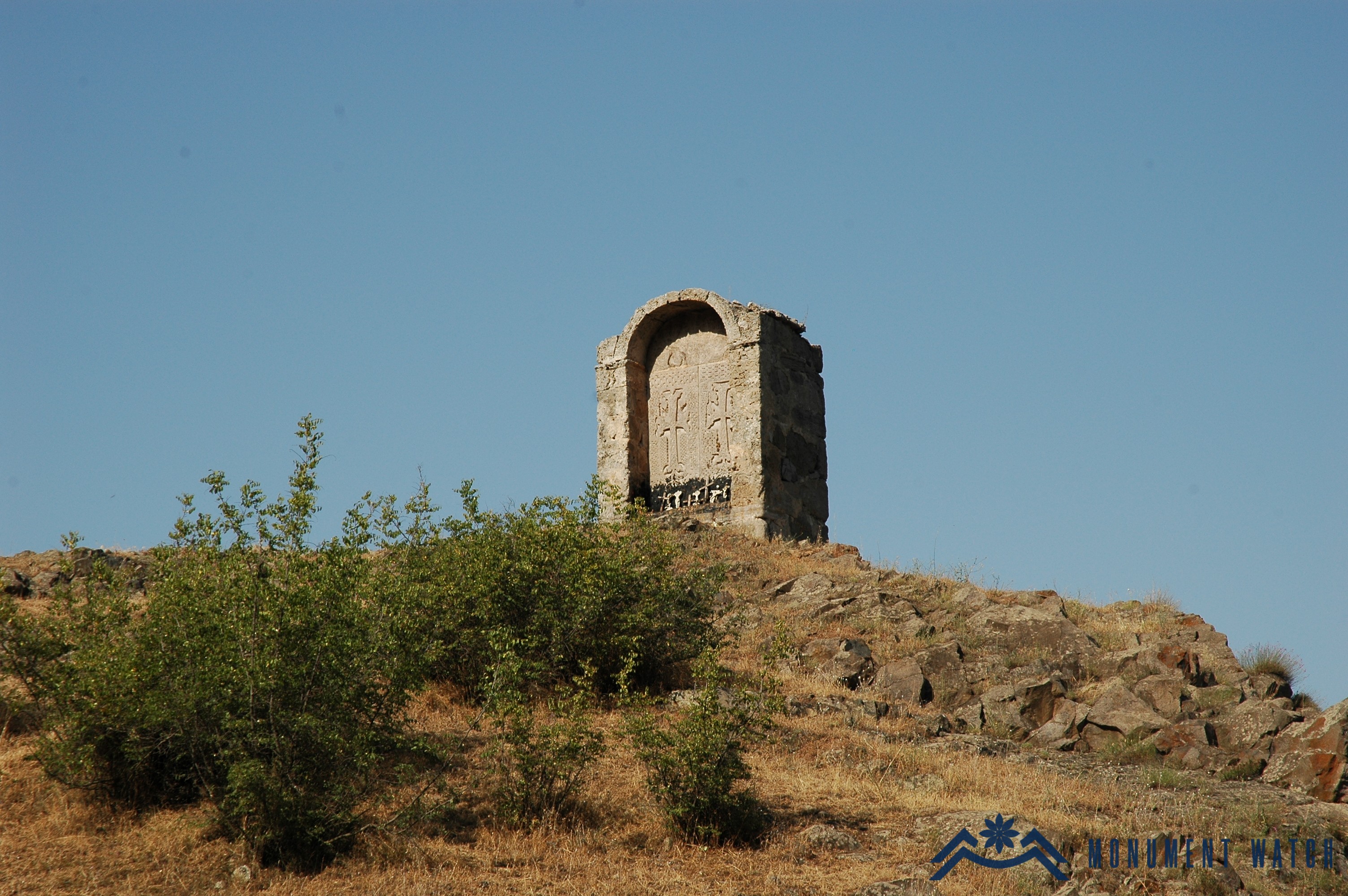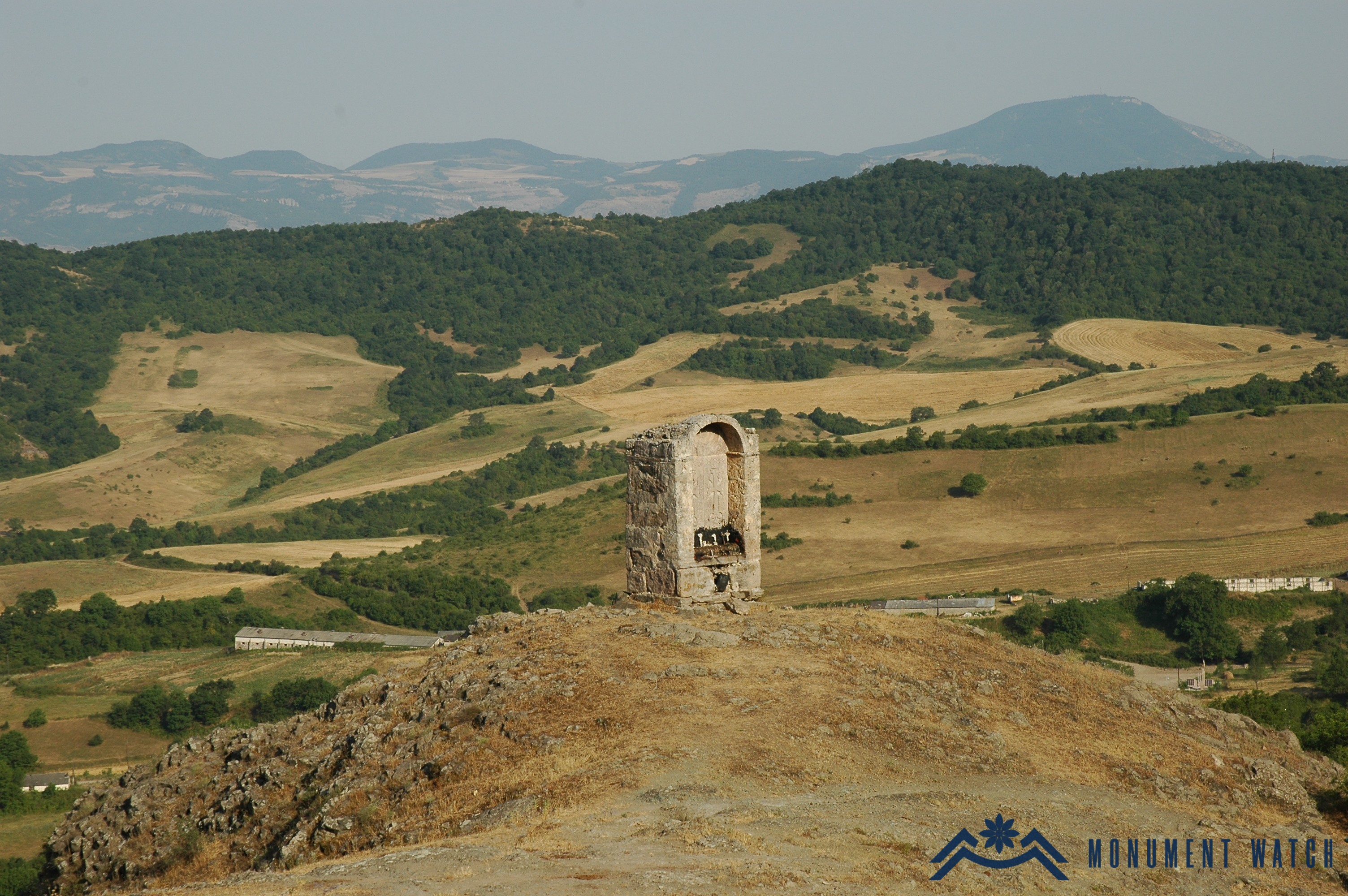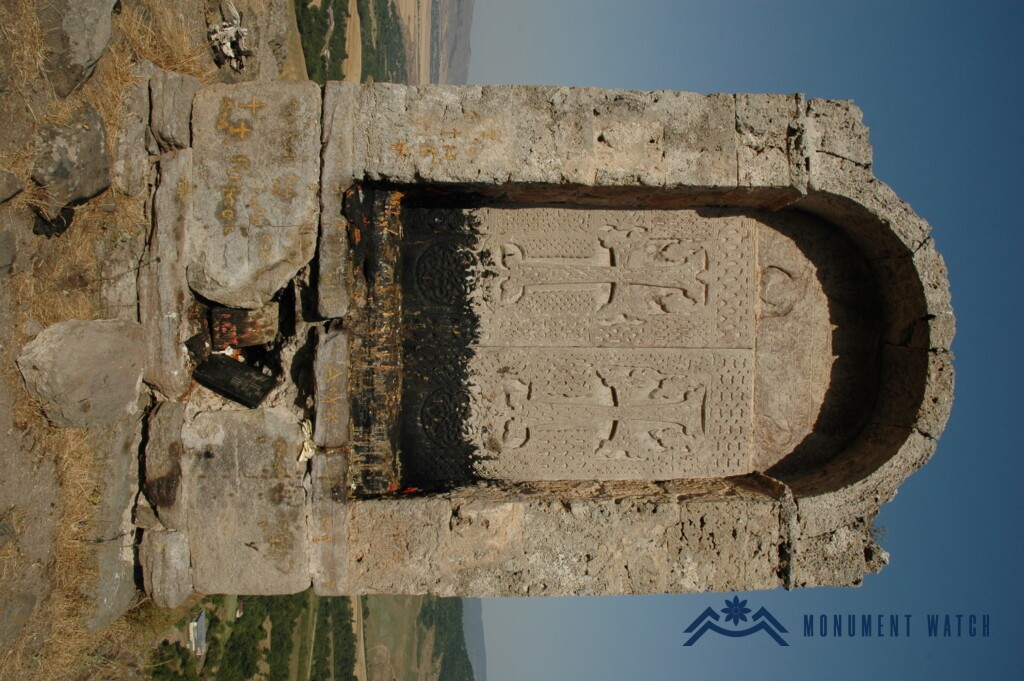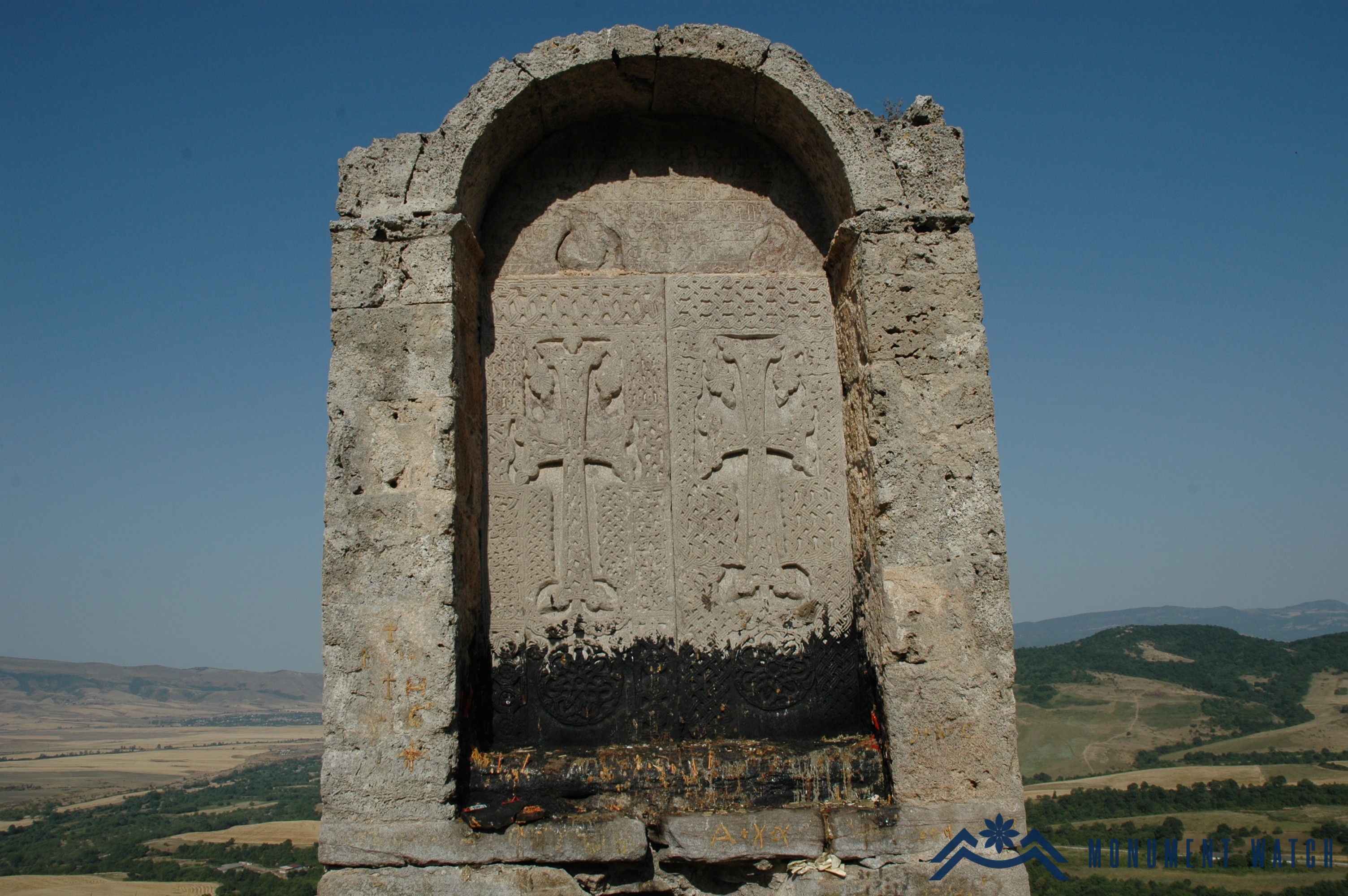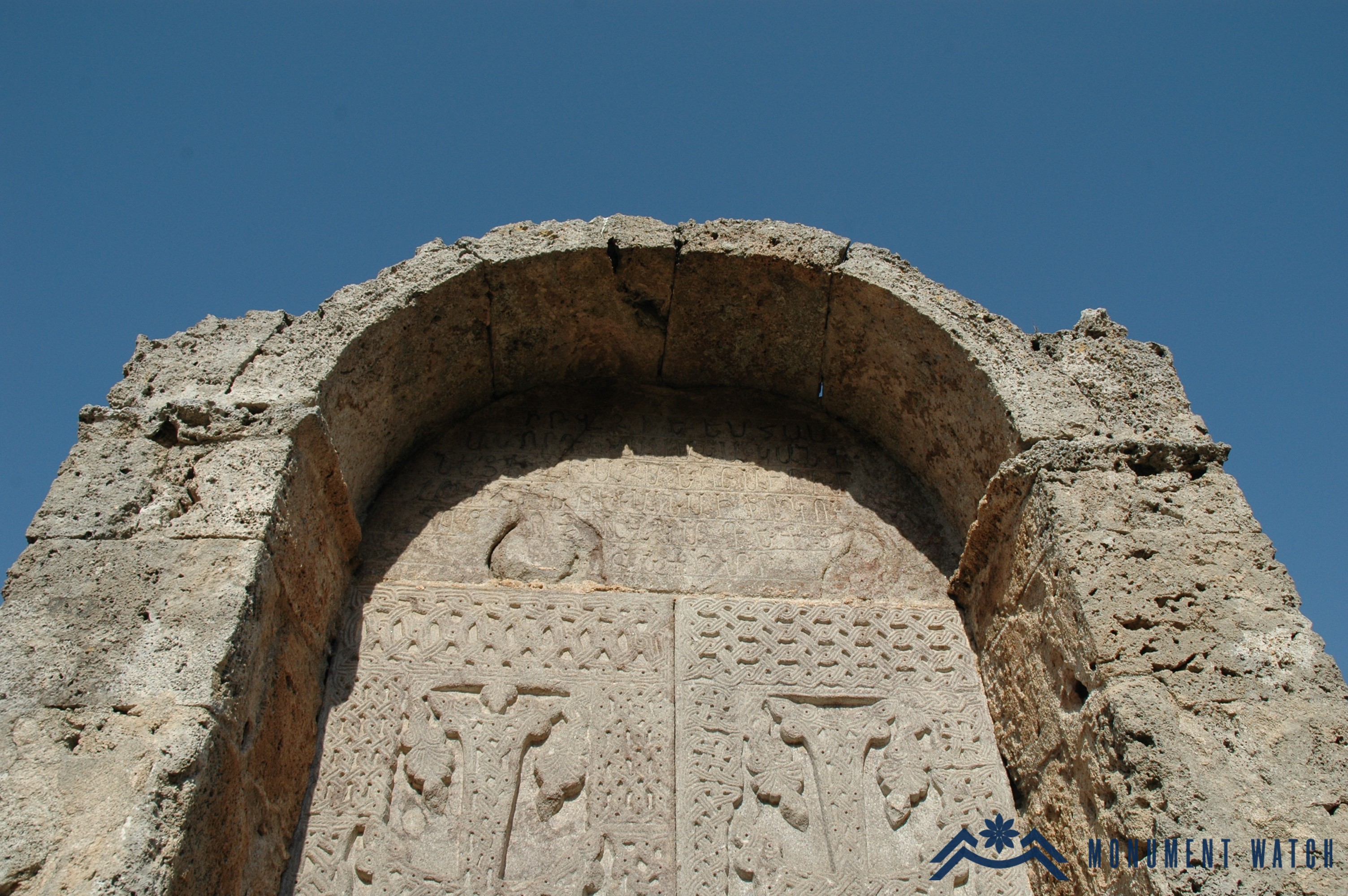The wall-enclosed khachkar of the village of Dahrav
Location
The monument is located at the northern edge of Dahrav village in the Askeran region of the Republic of Artsakh, in the area known as "P’rshnu Nahatak" (Martyr of Prshnu). It is situated 25 kilometers from Stepanakert.
Since 2023, it has been under Azerbaijani occupation.
Historical Overview
"Wall-enclosed khachkars" (In Armenian: vormnapak khachkars) refer to khachkars incorporated into specially constructed stone niches. The earliest examples appeared in the 11th century in Ani and its surroundings, later spreading to eastern and central Armenia during the 12th-14th centuries (Petrosyan 2008, 121; Karapetyan 1983, 34). The "architecturalization" of khachkars, which made them more accessible and convenient for various commemorative rituals, prayers, and worship, indicates the expansion of their ritual functions. Wall-enclosed khachkars became particularly widespread in the 13th century (Petrosyan 2008, 143; Petrosyan, Yeranyan 2022, 32).
H. Petrosyan suggests that the earliest wall-enclosed khachkars are those of Khdzkonk and Tsaghats Kar (Petrosyan 2008, 119-121). Meanwhile, S. Karapetyan, referencing certain now-lost inscriptions, hypothesized that the oldest wall-enclosed khachkars were created in Artsakh (Karapetyan 1983, 35-36). According to the researcher, nine wall-enclosed khachkars have been preserved (or are known) in Artsakh, seven in Syunik, and sixteen in Ayrarat (Karapetyan 1983, 34).
Some information about the wall-enclosed khachkars of Dahrav has been provided by Makar Barkhudaryants and Sargis Jalalyants.
S. Jalalyants writes: "Dahrav is an Armenian village. It has thirty houses, a church, and a beautiful monument erected by Hasan, son of Vasak, in memory of Gurgen and Ukan, in the Armenian year 720" (Jalalyants 1858, 343). However, according to M. Barkhudaryants, the inscription on the pediment of the monument, crowning two crosses, states:
"In the year 725 (1276), I, the son of Hasan Vasak, erected this cross for the salvation of the soul of my brother Djurdjin Ukan. Whoever reads this, remember [him] in the name of the Lord" (Barkhudaryants 1895, 156-157).
This means the cross was not erected in 1271 for the salvation of the souls of "Gurgen and Ukan," but in 1276 for the salvation of the soul of his brother Djurdjin Ukan.
The same date of 1276 is presented in the 5th volume of The Corpus of Armenian Epigraphy (CAE 5), as well as in the works of Sh. Mkrtchyan, S. Karapetyan, and H. Petrosyan (CAE 5, 144; Mkrtchyan 1988; Karapetyan 1983, 34; Petrosyan, Yeranyan 2022, 35).
Architectural-compositional examination
The monument is one of the main sacred sites of the village of Dahrav. The sacred area, at the southeastern upper section of which stands the wall-enclosed khachkar adorned with intricately carved decorations, is known as "Prshnu Nahatak" (Martyr of Prshnu). The remains of a chapel structure are preserved at this site. In the past, three wall-enclosed khachkars stood here, but only one remains today (Figs. 1, 2, 3, 5).
The Dahrav wall-enclosed khachkar is located not far from the village, near the chapel known as Nahatak. The monument is situated on a high hill, bordered to the south by rocky cliffs, making the hill inaccessible from that side. The monument is placed on a stepped stone foundation, which has two levels on the eastern and southern sides. The structure originally had a gable roof (Karapetyan 1983, 36-37).
On the semicircular lintel above the pair of khachkars, the following six-line inscription is found:
"In the year 725 (1276), I, Hasan, son of Vasak, erected this cross for the salvation of the soul of my brother Djurdji Ukan. Whoever reads this, remember him in the name of the Lord" (Fig. 4).
The condition before and after the war
Before the war, the monument was in good condition. After the complete depopulation of Artsakh in September 2023, the site fell under Azerbaijani control. There is currently no information available regarding the state of the monument.
Bibliography
- Jalalyants 1858 - Jalalyants, S., Tiflis, Book 2.
- Barkhudaryants 1895 - Barkhudaryants, M., Artsakh, Baku.
- Karapetyan 1983 - Karapetyan, S., Wall-Enclosed Khachkars of Artsakh, Etchmiadzin, Vol. 40, No. 8.
- CAE 5 - The Corpus of Armenian Epigraphy, Vol. 5, Artsakh, compiled by S. Barkhudaryan, Yerevan, 1982.
- Mkrtchyan 1988 - Mkrtchyan, Sh., Historical and Architectural Monuments of Nagorno-Karabakh, Yerevan.
- Petrosyan 2008 - Petrosyan, H., Khachkar: Origin, Function, Iconography, and Semantics, Yerevan.
- Petrosyan, Yeranyan 2022 - Petrosyan, H., Yeranyan, N., The Monumental Culture of Artsakh, Yerevan.
The wall-enclosed khachkar of the village of Dahrav
Artsakh
